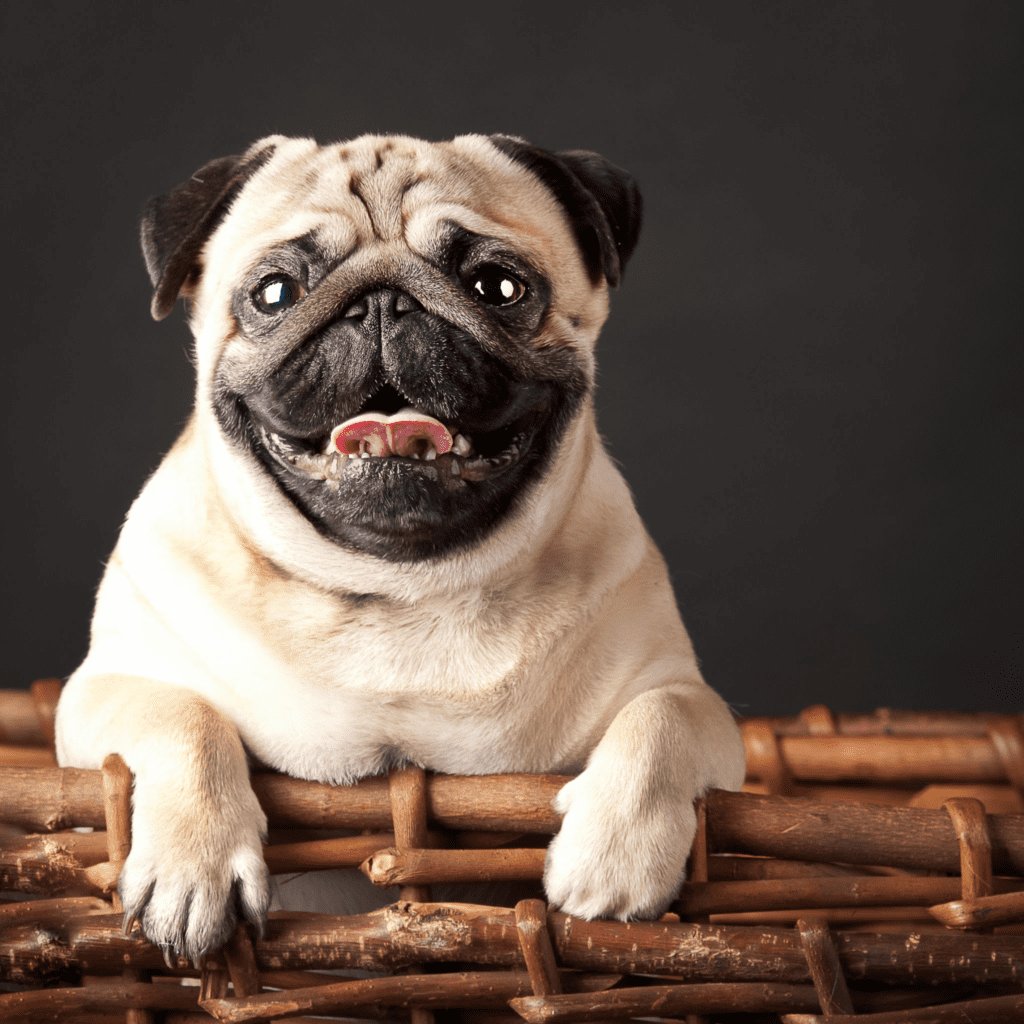
Cheapest Dog Breeds in India: Dogs have been cherished companions of humans for centuries. Their loyalty, affection, and playful nature make them ideal pets for families and individuals alike. However, owning a dog comes with financial responsibilities, and for many potential pet owners in India, affordability is a key factor. This article explores some of the cheapest dog breeds available in India, their care requirements, and tips for potential pet owners to ensure they can provide a loving and healthy environment for their new furry friends.
| Dog Breed | Price Range (INR) |
|---|---|
| Indian Pariah Dog | Free or minimal adoption fee |
| Dachshund | ₹5,000 – ₹15,000 |
| Labrador Retriever | ₹7,000 – ₹20,000 |
| Pug | ₹5,000 – ₹15,000 |
| Indian Spitz | ₹4,000 – ₹8,000 |
| Beagle | ₹8,000 – ₹15,000 |
| Chihuahua | ₹5,000 – ₹15,000 |
Factors Influencing Dog Costs
Before diving into the specifics of cheap dog breeds, it’s essential to understand the factors that influence the cost of owning a dog. These factors include:
- Breed Popularity: Popular breeds tend to be more expensive due to high demand.
- Health and Medical Expenses: Some breeds are prone to specific health issues, increasing veterinary costs.
- Maintenance and Grooming: The level of grooming required can vary significantly between breeds.
- Food and Nutrition: The size and dietary needs of the dog affect food costs.
- Training and Socialization: Some breeds require more training and socialization, impacting the overall cost.
Cheapest Dog Breeds in India
Several dog breeds are known for their affordability and low maintenance in India. These breeds are not only budget-friendly but also make excellent pets for various households.

1. Indian Pariah Dog
The Indian Pariah Dog, often simply known as the “Desi Dog,” is a native breed of India that has been around for thousands of years. These dogs are known for their resilience, intelligence, and adaptability. They are often seen roaming the streets of India but make excellent pets when given a chance. This guide provides an in-depth look at the Indian Pariah Dog, covering their history, characteristics, care needs, and frequently asked questions.
History of the Indian Pariah Dog
The Indian Pariah Dog has a rich and ancient history:
- Ancient Origins: The Indian Pariah Dog is one of the oldest and most primitive dog breeds in existence, believed to be over 4,000 years old. Archaeological evidence suggests that these dogs were companions to ancient civilizations in India.
- Natural Selection: Unlike many modern breeds, the Indian Pariah Dog has evolved through natural selection rather than selective breeding by humans. This has resulted in a hardy and genetically diverse breed.
- Role in Society: Historically, these dogs have served as companions, guards, and hunting partners for rural communities across India.
Physical Characteristics
Indian Pariah Dogs have a distinct and recognizable appearance:
- Size: Medium-sized, with males typically standing 18-25 inches tall at the shoulder, and females 16-22 inches.
- Weight: Generally weigh between 20-30 kg (44-66 lbs).
- Coat: Short, coarse coat that is easy to maintain. Coat colors vary widely, including shades of brown, black, and tan.
- Ears: Erect, pointed ears that contribute to their alert appearance.
- Tail: Curved, bushy tail that is often carried high.
Temperament and Personality
Indian Pariah Dogs are known for their balanced temperament and versatility:
- Intelligent: Highly intelligent and quick learners, they respond well to training.
- Loyal: Extremely loyal to their families and make excellent watchdogs.
- Independent: They have a strong sense of independence, a trait developed through natural selection.
- Social: Generally friendly with people and other animals when properly socialized.
- Alert: Naturally alert and vigilant, making them good guard dogs.
Health and Lifespan
Indian Pariah Dogs are known for their robust health:
- Lifespan: 12-16 years
- Common Health Issues: Due to their genetic diversity and natural selection, they are less prone to many genetic disorders common in purebred dogs. However, they can still face typical canine health issues such as:
- Parasites: Regular deworming and flea control are necessary.
- Skin Infections: Can be prone to skin issues if not properly groomed and cared for.
Care and Maintenance
Caring for an Indian Pariah Dog involves several aspects:
1. Diet and Nutrition
- Balanced Diet: Provide a balanced diet with high-quality commercial dog food or homemade meals, ensuring they get the necessary nutrients.
- Portion Control: Avoid overfeeding to prevent obesity.
- Hydration: Ensure they have access to fresh water at all times.
2. Exercise
- Daily Exercise: Indian Pariah Dogs are active and need regular exercise. Daily walks, playtime, and mental stimulation are essential.
- Secure Environment: Ensure they have a secure yard to play in, as they can be quite agile and curious.
3. Grooming
- Brushing: Brush their coat once a week to remove loose hair and keep it clean.
- Bathing: Bathe them as needed, typically once a month or when they get particularly dirty.
- Nail Trimming: Trim their nails regularly to prevent overgrowth and discomfort.
- Ear Care: Check and clean their ears regularly to prevent infections.
4. Training and Socialization
- Basic Obedience: Start with basic obedience training to establish good behavior and commands.
- Positive Reinforcement: Use positive reinforcement techniques, such as treats and praise, to encourage desired behaviors.
- Socialization: Expose your Indian Pariah Dog to different people, environments, and other animals to ensure they are well-rounded and confident.
- Cost: Often free or minimal adoption fee
- Health: Generally healthy with fewer genetic issues
- Grooming: Low grooming needs
- Temperament: Loyal, intelligent, and good with families

2. Dachshund
Dachshunds are small, energetic dogs known for their distinctive long bodies and short legs. They are relatively affordable and adapt well to apartment living.
- Cost: ₹5,000 – ₹15,000
- Health: Prone to spinal issues; regular vet check-ups required
- Grooming: Moderate grooming needs
- Temperament: Playful, stubborn, and loyal

3. Labrador Retriever
While Labrador Retrievers are immensely popular, they are also one of the more affordable breeds in India due to their widespread availability.
- Cost: ₹7,000 – ₹20,000
- Health: Prone to hip dysplasia and obesity; regular exercise needed
- Grooming: Moderate grooming needs
- Temperament: Friendly, outgoing, and excellent with children

4. Pug
Pugs are small, affectionate dogs with a distinctive wrinkled face. They are well-suited for apartment living and have moderate exercise needs.
- Cost: ₹5,000 – ₹15,000
- Health: Prone to respiratory issues due to their flat faces
- Grooming: Low grooming needs
- Temperament: Affectionate, good with families, and playful

5. Indian Spitz
The Indian Spitz is often confused with the Pomeranian due to their similar appearance but is more affordable and better adapted to the Indian climate.
- Cost: ₹4,000 – ₹8,000
- Health: Generally healthy
- Grooming: Moderate grooming needs due to their thick fur
- Temperament: Friendly, intelligent, and good watchdogs

6. Beagle
Beagles are one of the most beloved dog breeds worldwide, known for their friendly nature, intelligence, and distinctive appearance. They make excellent family pets due to their sociable temperament and relatively low maintenance requirements. This guide provides an in-depth look at Beagles, covering their history, characteristics, care needs, and frequently asked questions.
History of the Beagle
The Beagle has a rich history dating back to ancient times. Here’s a brief overview:
- Ancient Origins: Small hound dogs resembling Beagles were present in ancient Greece and Rome.
- Development in England: The modern Beagle was developed in England in the 19th century for hunting hare. The breed was prized for its excellent sense of smell and tracking ability.
- Recognition: Beagles were officially recognized by the American Kennel Club (AKC) in 1885.
Physical Characteristics
Beagles are small to medium-sized dogs with a distinctive appearance:
- Size: Beagles come in two size varieties: under 13 inches and 13-15 inches at the shoulder.
- Weight: Typically weigh between 20-30 pounds (9-13 kg).
- Coat: Short, smooth, and dense coat that comes in various colors, most commonly tricolor (black, white, and tan).
- Ears: Long, floppy ears that enhance their scent-tracking abilities.
- Tail: Moderately long tail, carried high and often wagging.
Temperament and Personality
Beagles are known for their friendly and outgoing nature:
- Sociable: Beagles are very sociable and enjoy the company of people and other dogs.
- Curious: They are naturally curious and have a keen sense of smell, making them excellent explorers.
- Energetic: Beagles are energetic and require regular exercise to stay healthy and happy.
- Good with Children: Their gentle and tolerant nature makes them great companions for children.
- Vocal: Beagles can be quite vocal, often barking or howling, especially when they catch an interesting scent.
Health and Lifespan
Beagles are generally healthy dogs, but they are prone to certain health issues:
- Lifespan: 12-15 years
- Common Health Issues:
- Obesity: Beagles love to eat and can become overweight if their diet and exercise are not monitored.
- Ear Infections: Their long ears can trap moisture and dirt, leading to infections.
- Hip Dysplasia: A genetic condition that can cause lameness and arthritis.
- Epilepsy: Some Beagles may suffer from epilepsy, leading to seizures.
- Cost: ₹8,000 – ₹15,000
- Health: Prone to obesity and ear infections; regular vet visits required
- Grooming: Moderate grooming needs
- Temperament: Friendly, curious, and good with children

7. Chihuahua
Chihuahuas are the smallest dog breed in the world, known for their lively personality and distinctive appearance. Despite their small size, they have a big presence and are often characterized by their spirited and loyal nature. This guide provides an in-depth look at Chihuahuas, covering their history, characteristics, care needs, and frequently asked questions.
History of the Chihuahua
The Chihuahua has a fascinating history that traces back to ancient civilizations:
- Ancient Origins: Chihuahuas are believed to have descended from the Techichi, a companion dog of the ancient Toltec civilization in Mexico.
- Development in Mexico: The modern Chihuahua was developed in Mexico, and they gained popularity in the United States during the late 19th century.
- Recognition: The American Kennel Club (AKC) officially recognized the Chihuahua in 1904.
- Cost: ₹5,000 – ₹15,000
- Health: Prone to dental issues and luxating patella
- Grooming: Low grooming needs
- Temperament: Lively, loyal, and good for small households
Cost of Owning a Dog
Beyond the initial purchase or adoption cost, owning a dog involves ongoing expenses. Understanding these costs can help potential dog owners make an informed decision.
1. Food
The cost of dog food can vary based on the size and dietary needs of the dog. On average, dog owners in India might spend ₹1,000 – ₹3,000 per month on food.
2. Veterinary Care
Regular vet visits are essential for vaccinations, deworming, and health check-ups. Annual veterinary costs can range from ₹2,000 to ₹10,000, depending on the dog’s health and breed-specific needs.
3. Grooming
Grooming expenses include regular bathing, nail trimming, and coat maintenance. Professional grooming services can cost between ₹500 to ₹2,000 per session, depending on the breed and grooming requirements.
4. Training and Socialization
Training is crucial for a well-behaved dog. Professional training classes can range from ₹2,000 to ₹10,000, depending on the duration and level of training.
5. Accessories and Supplies
Essentials such as collars, leashes, toys, and bedding are one-time or occasional expenses. Initial setup costs can be around ₹2,000 to ₹5,000.
Tips for Affordable Dog Ownership
Owning a dog on a budget is possible with careful planning and consideration. Here are some tips to help keep costs manageable:
1. Adopt, Don’t Shop
Consider adopting a dog from a shelter or rescue organization. Adoption fees are usually lower than buying from breeders, and you also help give a dog a second chance.
2. Choose the Right Breed
Select a breed that fits your lifestyle and budget. Smaller breeds generally cost less to feed and maintain.
3. Preventive Health Care
Invest in preventive healthcare measures like vaccinations and regular check-ups to avoid expensive medical treatments later.
4. DIY Grooming
Learn basic grooming techniques to reduce the frequency of professional grooming visits.
5. Homemade Dog Food
Consider preparing homemade dog food, which can be more cost-effective and healthier than commercial options.
6. Pet Insurance
Consider investing in pet insurance to cover unexpected medical expenses. This can provide financial relief in case of emergencies.
Conclusion
Dogs bring immense joy and companionship into our lives, and owning one doesn’t have to be an expensive endeavor. By choosing an affordable breed and being mindful of ongoing costs, prospective pet owners in India can find a loyal and loving companion without breaking the bank. The key is to ensure that regardless of the cost, every dog receives the care, love, and attention they deserve. With the right approach, dog ownership can be a rewarding and enriching experience for both the pet and the owner.FAQ ChatGPT
Frequently Asked Questions (FAQ)
1. What are the cheapest dog breeds in India?
- The cheapest dog breeds in India include the Indian Pariah Dog, Dachshund, Labrador Retriever, Pug, Indian Spitz, Beagle, and Chihuahua.
2. How much does an Indian Pariah Dog cost?
- Indian Pariah Dogs are often free or available for a minimal adoption fee.
3. What is the price range for a Dachshund in India?
- Dachshunds typically cost between ₹5,000 and ₹15,000.
4. Are Labradors affordable in India?
- Yes, Labrador Retrievers are relatively affordable, with prices ranging from ₹7,000 to ₹20,000.
5. How much does it cost to buy a Pug in India?
- Pugs usually cost between ₹5,000 and ₹15,000.
6. Is the Indian Spitz an affordable breed?
- Yes, the Indian Spitz is affordable, with prices ranging from ₹4,000 to ₹8,000.
7. What is the cost of owning a Beagle in India?
- Beagles are priced between ₹8,000 and ₹15,000.
8. How much does a Chihuahua cost in India?
- Chihuahuas generally cost between ₹5,000 and ₹15,000.
9. What ongoing costs should I consider when owning a dog?
- Ongoing costs include food, veterinary care, grooming, training, and accessories. These costs can vary based on the breed and individual needs of the dog.
10. How can I reduce the cost of dog ownership?
- To reduce costs, consider adopting from a shelter, choosing a breed that fits your budget, investing in preventive healthcare, learning basic grooming techniques, preparing homemade dog food, and considering pet insurance.
11. Is adopting a dog cheaper than buying one?
- Yes, adopting a dog is usually cheaper than buying one from a breeder. Adoption fees are often lower, and many adopted dogs come spayed/neutered and vaccinated.
12. What factors should I consider before choosing a dog breed?
- Consider factors such as your living space, lifestyle, budget, grooming needs, and the breed’s temperament and health issues.
13. Are small dog breeds cheaper to maintain?
- Generally, small dog breeds are cheaper to maintain due to lower food consumption, grooming needs, and space requirements.
14. Do Indian Pariah Dogs require special care?
- Indian Pariah Dogs are generally low-maintenance and well-adapted to the Indian climate. They require basic care, regular vaccinations, and a healthy diet.
15. Can I keep a large breed dog in an apartment?
- While it is possible to keep a large breed dog in an apartment, it requires more effort to ensure the dog gets enough exercise and mental stimulation. Breeds like Labrador Retrievers can adapt well to apartment living if their exercise needs are met.
16. What is the best dog breed for first-time owners?
- Breeds like the Indian Pariah Dog, Labrador Retriever, and Beagle are great for first-time owners due to their friendly nature and relatively low maintenance.
17. Do all dog breeds have health issues?
- While all dog breeds can have health issues, some breeds are more prone to certain genetic conditions. Regular veterinary check-ups and preventive care can help manage these risks.
18. How often should I groom my dog?
- The grooming frequency depends on the breed. Dogs with long or thick coats may require grooming every few weeks, while short-haired breeds may need less frequent grooming. Regular brushing, bathing, and nail trimming are essential.
19. What should I feed my dog?
- A balanced diet consisting of high-quality commercial dog food or homemade meals with the right nutrients is crucial. Consult your veterinarian for specific dietary recommendations based on your dog’s breed, age, and health.
20. Is pet insurance worth it?
- Pet insurance can be worth the investment to cover unexpected medical expenses, providing financial relief in emergencies. Evaluate different insurance plans to find one that suits your needs and budget.

Wow wonderful blog layout How long have you been blogging for you make blogging look easy The overall look of your site is great as well as the content